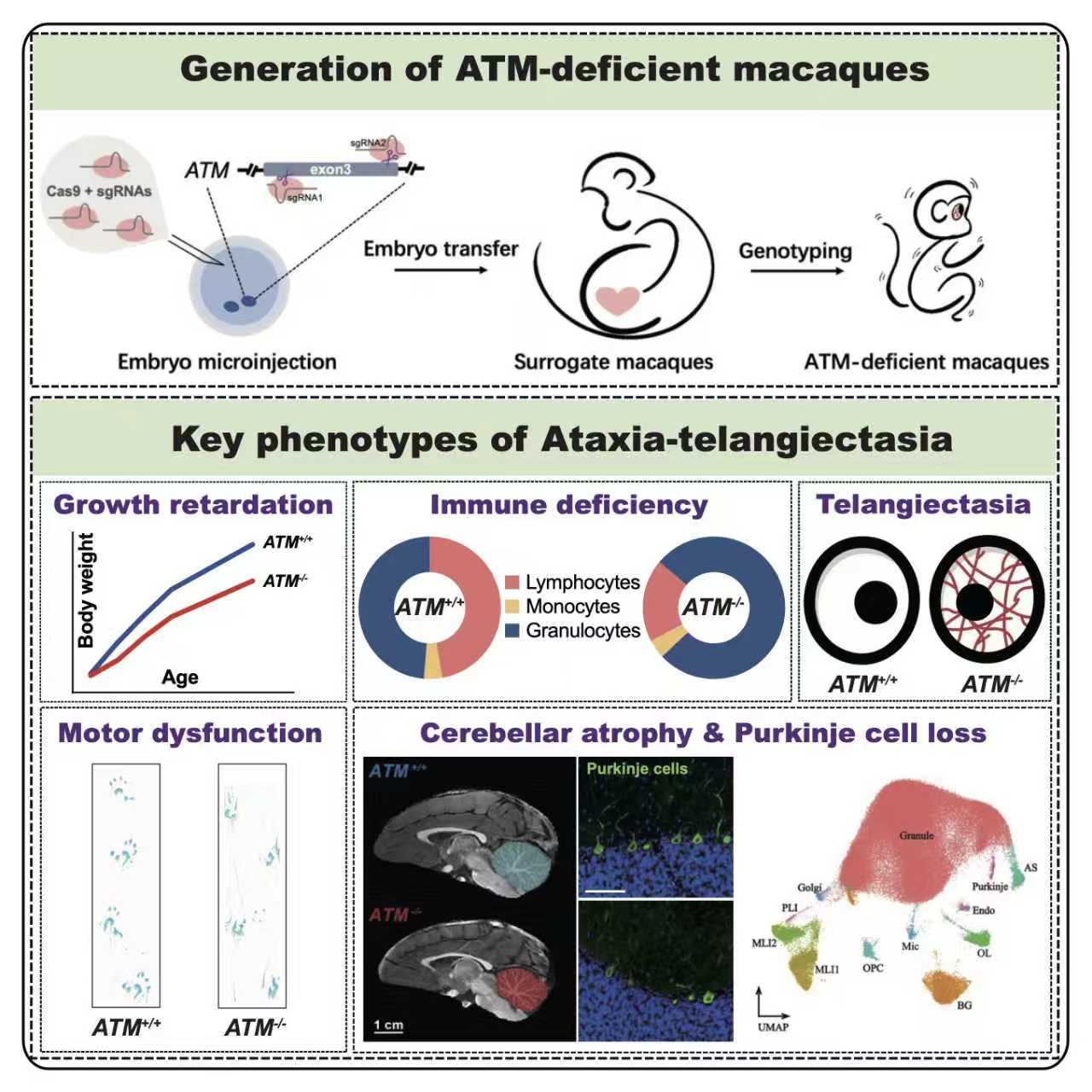A research team at the Kunming Institute of Zoology, Chinese Academy of Sciences, has successfully created the world’s first primate model of Ataxia-Telangiectasia (A-T), a rare and devastating childhood neurodegenerative disorder. The breakthrough study was published today in Cell Reports Medicine.
A-T is caused by mutations in the ATM gene and affects multiple body systems. Children with A-T typically develop severe problems with balance and coordination in their first year of life, eventually losing the ability to walk. They also suffer from immune deficiencies, dilated blood vessels, extreme sensitivity to radiation, and a greatly increased risk of cancer. Currently, there are no effective treatments. Until now, progress has been hampered by the lack of a suitable animal model. While mouse models exist, none have been able to replicate the hallmark neurological symptoms of human patients, in particular, progressive cerebellar atrophy and motor dysfunction.
Led by Dr. Li, the research team used CRISPR-Cas9 gene editing to create macaques with a targeted loss of ATM gene function. These monkeys gradually developed symptoms closely mirroring those of human patients, including growth delays, immune abnormalities, and most critically, progressive cerebellar degeneration and ataxia. Detailed analyses revealed striking pathological changes: loss of Purkinje cells in the cerebellum, mitochondrial damage, thinning of myelin, and abnormal gene expression in molecular layer interneurons. This is the first time such features have been observed in a nonhuman primate model, offering unprecedented insights into the causes of A-T. “This macaque model represents a milestone for A-T research,” said the research team. “It provides direct evidence that ATM deficiency drives cerebellar neurodegeneration and establishes a vital platform for testing therapies.” The achievement not only fills a major gap in the field but also brings hope to families affected by this heartbreaking disorder. The new model is expected to accelerate discoveries into disease mechanisms and the development of potential treatments.
The studyATM deficiency drives phenotypic diversity and Purkinje cell degeneration in a macaque model of Ataxia-Telangiectasiawas published online in Cell Reports Medicine on September 16, 2025.

Primate Model of Ataxia-Telangiectasia. Image by XU Kaiyu
Contact:
XU Kaiyu
Kunming Institute of Zoology, Chinese Academy of Sciences,
Kunming, Yunnan 650201, China
E-mail: xukaiyu@mail.kiz.ac.cn
